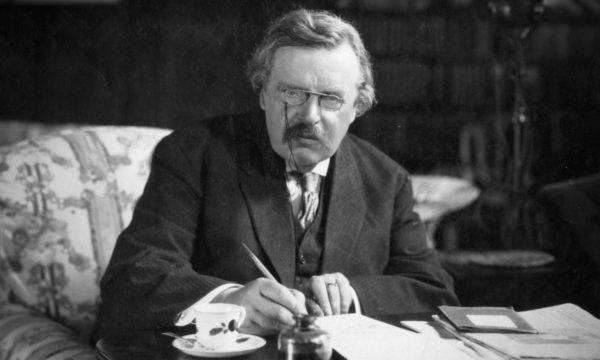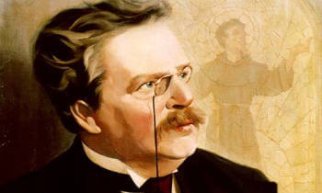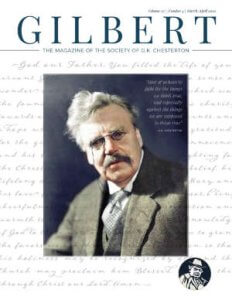In discussing his monumental biography of Charles Dickens, Peter Ackroyd made the equally monumental claim that he had read everything ever written by and about Dickens. But he was not saying this to boast; he was saying it to give weight to his claim that the best writer on Dickens is G.K. Chesterton.
Chesterton’s intimacy with Dickens has long been apparent. He could quote whole passages of Dickens from memory years after he had read them. He wrote early occasional pieces on Dickens and a book-length masterpiece of literary criticism in 1906. But in 1907, the connection between the two writers was sealed when Chesterton was asked to write introductions to each of the 25 volumes in the Everyman edition of Dickens. It included all of Dickens’ novels, collections of short stories and travel writing. In 1911, the Chesterton introductions were collected into a single volume under the cumbersome title of Appreciations and Criticisms of the Works of Charles Dickens and re-released many years later under the more manageable, Chesterton on Dickens. (All are available in Volume 15 of the Collected Works of Chesterton from Ignatius.)
Reading them evokes the image of two joyful giants strolling across the world, arm in arm.
When Chesterton defends and explains the great Victorian author, his arguments prophetically defend his own writing. Dickens, for instance, was accused of being superficial. So was Chesterton. Of such critics, Chesterton says, “they cannot grasp that there is foam upon the deep seas.” Such critics are too easily impressed by depressing literature and the confinement inflicted by sorrow. They cannot appreciate the difficulty of portraying happiness and the liberty provided by laughter.
“There are twenty tiny minor poets who can describe fairly impressively an eternity of agony; there are very few even of the eternal poets who can describe ten minutes of satisfaction.”
Chesterton explains that Dickens’ ability to paint vivid portraits of his characters and the conditions in which they live can be attributed to his background as a writer in the streets, a journalist who walked side by side with his subjects. “It was as a journalist that he attacked the world, as a journalist that he conquered it.” Dickens, he says, “is close to all the permanent human things.” That is why he is a defender of the common man, of children, of conviviality. That is why he speaks out forcefully, as he does in Oliver Twist, against social oppression. That is why so many of his novels repeat the theme of the eternal revolt of the weak against the strong.
The Dickens novels also have a universal appeal because they are driven by the “ultimate and poetic paradox” that everything that loves, fights. Chesterton explains that this universal truth is also the universal plot device of any good novel:
All romances consist of three characters… For the sake of argument they may be called St. George and the Dragon and the Princess. In every romance there must be the twin elements of loving and fighting. In every romance there must be the three characters: there must be the Princess, who is a thing to be loved; there must be the Dragon, who is a thing to be fought; and there must be St. George, who is a thing that both loves and fights. There have been many symptoms of cynicism and decay in our modern civilization. But of all the signs of modern feebleness, of lack of grasp on morals as they actually must be, there has been none quite so silly or so dangerous as this: that the philosophers of today have started to divide loving from fighting and to put them into opposite camps. [But] the two things imply each other; they implied each other in the old romance and in the old religion, which were the two permanent things of humanity. You cannot love a thing without wanting to fight for it. You cannot fight without something to fight for. To love a thing without wishing to fight for it is not love at all; it is lust. It may be an airy, philosophical, and disinterested lust… but it is lust, because it is wholly self-indulgent and invites no attack. On the other hand, fighting for a thing without loving it is not even fighting; it can only be called a kind of horse-play that is occasionally fatal. Wherever human nature is human and unspoilt by any special sophistry, there exists this natural kinship between war and wooing, and that natural kinship is called romance. It comes upon a man especially in the great hour of youth; and every man who has ever been young at all has felt, if only for a moment, this ultimate and poetic paradox. He knows that loving the world is the same thing as fighting the world.





